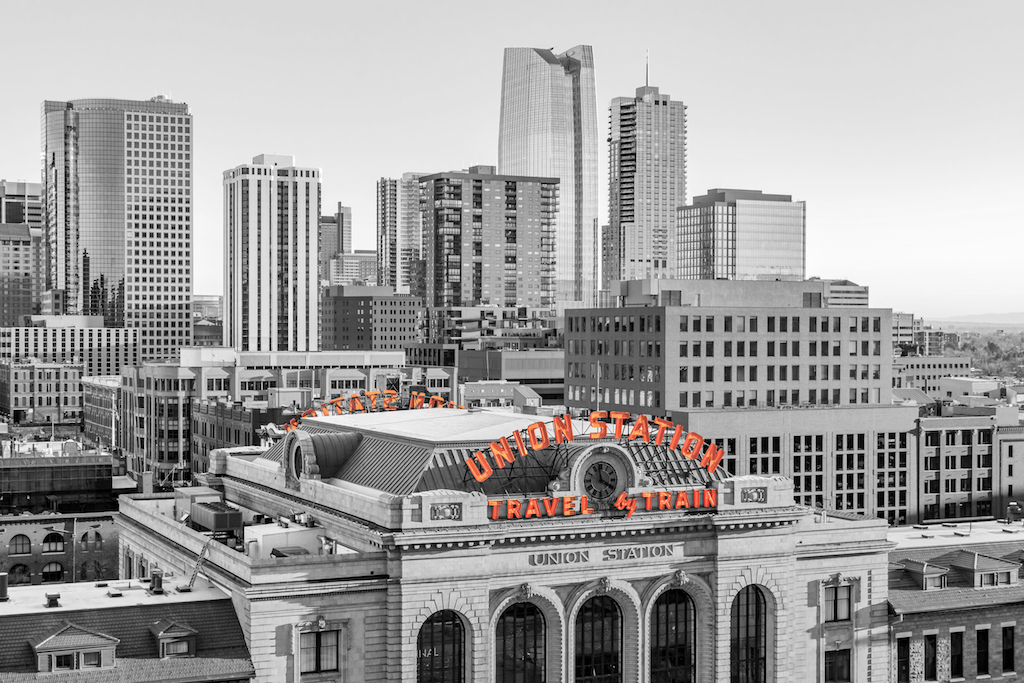A new CBRE survey finds that more than two-thirds of real estate investors exhibited increased risk appetite in H1 2021. Investors now broadly expect cap rates to remain stable or compress across most property types through the end of the year.
Capitalization rates—usually called cap rates—measure a property’s value by dividing its annual income by its sale price. A lower cap rate generally indicates a higher value.
“Denver is seeing explosive rent growth, record net in-migration from the coastal markets, numerous headquarter relocations and strong job growth, creating highly desirable market fundamentals. The positive story in Denver and relative value to coastal markets has attracted more out-of-state capital than ever before, and as a result, we are seeing cap rates continue to fall to record levels,” said CBRE’s Brady O’Donnell.
In Denver, cap rates for stabilized Class A industrial properties fell to a range of 3.80 percent to 4.75 percent in H1 2021, down 45 bps from a range of 4.25 percent to 4.75 percent in H2 2019.
Class A infill multifamily property cap rates fell to a range of 3.75 percent to 4.25 percent in H1 2021, down 50 bps from a range of 4.25 percent to 4.75 percent in H2 2019. Suburban multifamily property cap rates also fell to a range of 4.00 percent to 4.50 percent, down 50 bps from a range of 4.50 percent to 5.00 percent in H2 2019.
Cap rates for Class A office properties in Denver’s Central Business District remained unchanged from H2 2019, while cap rates for Class A suburban office properties rose to a range of 6.75 percent to 7.25 percent in H1 2021, up 25 bps from a range of 6.50 percent to 7.00 percent in H2 2019.
Class A neighborhood retail property cap rates in Denver fell to a range of 5.00 percent to 5.50 percent, down 25 bps from a range of 5.25 percent to 6.25 percent in H2 2019.
Investment Sentiment:
- More than 75% of real estate investors indicated that risk appetite increased during the first half of 2021, with just a handful becoming more risk-averse. This corresponds with transaction volumes that were up by 32% year-over-year in H1 2021, observed cap rate movements, and CBRE’s forecast for a strong year of investment activity.
- Investors expect cap rate movement to vary across property types in H2 2021. Cap rates are expected to continue to compress for industrial and multifamily properties in most markets, while rates are expected to largely remain flat for office, retail and hotel assets.
Capitalization Rates:
In light of the extraordinary market conditions over the past year, CBRE’s H1 2021 survey compares cap rates with the pre-pandemic levels in H2 2019, rather than H2 2020.
- While commercial real markets were severely disrupted in mid-2020, recoveries were well underway by year-end and today cap rates across property types are at or below pre-pandemic levels in many markets.
- The pandemic affected certain real estate sectors more than others. Every industrial market reported lower cap rates than in H2 2019, reflecting strong investor appetite because of increased e-commerce demand during the pandemic.
- Suburban multifamily assets were more resilient than their urban counterparts. No suburban multifamily market reported an increase in cap rates, with the majority reporting cap rate compression compared with H2 2019—this reflects strong market fundamentals during the pandemic, with many residents seeking more space, lower-density, and less-expensive rents in the suburbs.
- Despite the uncertainty created by the pandemic, office CBD cap rates remained stable or compressed across most of the top 25 markets (defined by volumes). Most suburban office markets saw cap rates remain stable or compress as the strong policy response to the pandemic helped to stabilize the economy and support values. Some of the cap rate compression may also be due to changes in underwriting (lower net operating income, impacting cap rates).
- While hotel and retail cap rates ticked up slightly, a paucity of closed transactions may have understated the extent of the movement.
Pricing:
- Investors were willing to purchase industrial and multifamily assets at a premium. Investors sought mostly small to moderate pricing discounts for office assets, and moderate to large discounts for retail properties and hotels.









